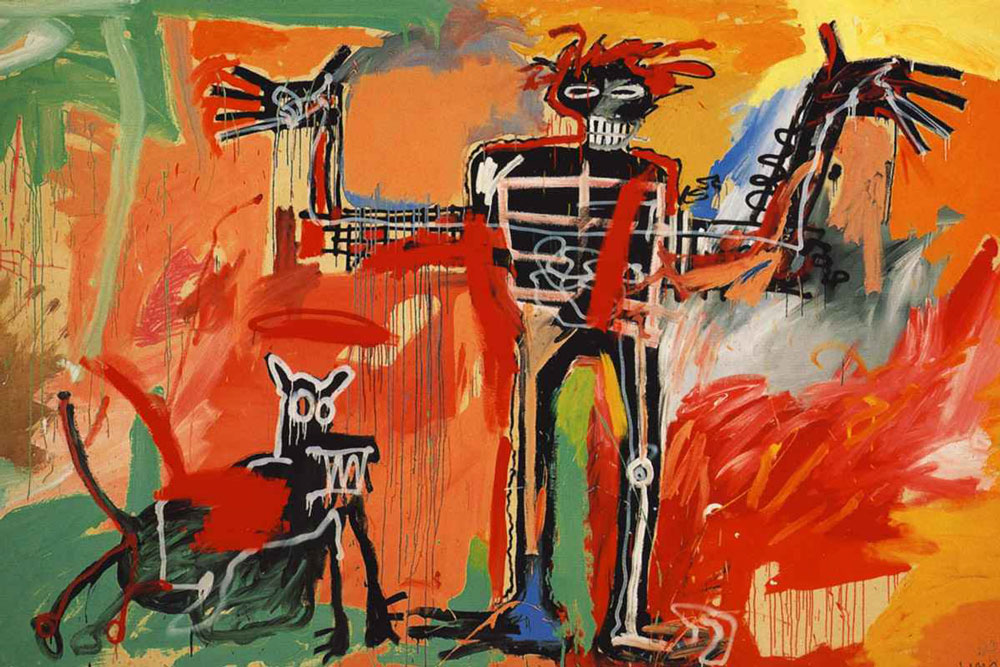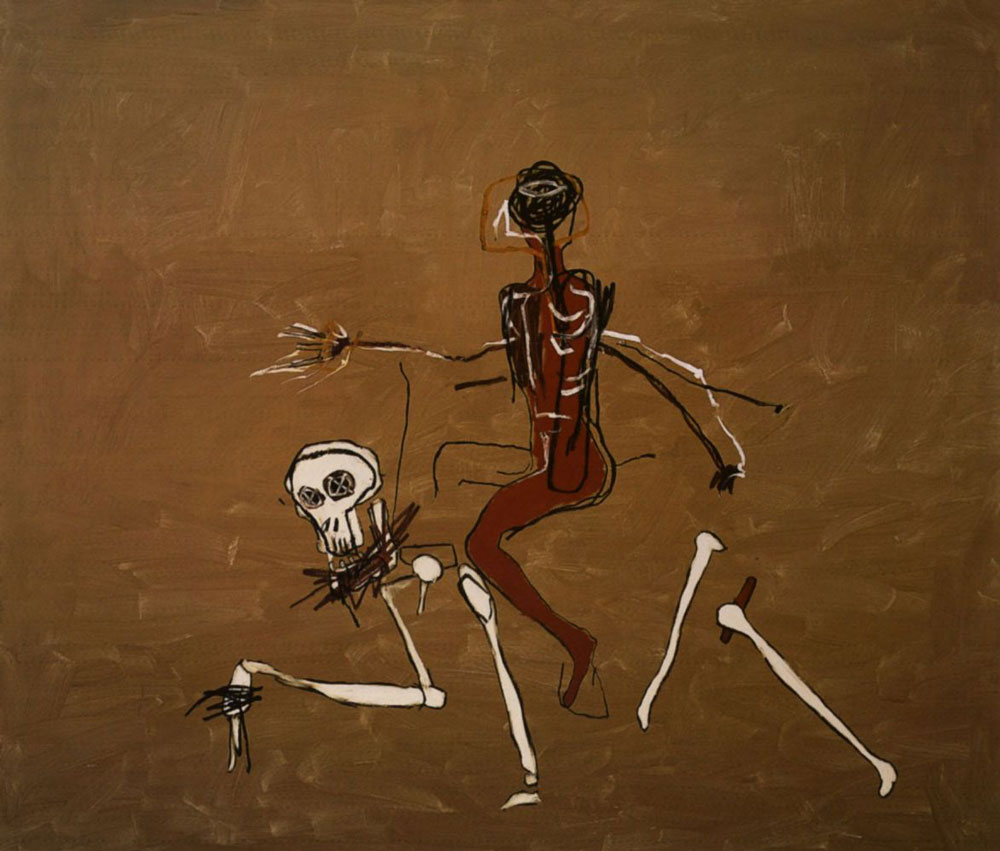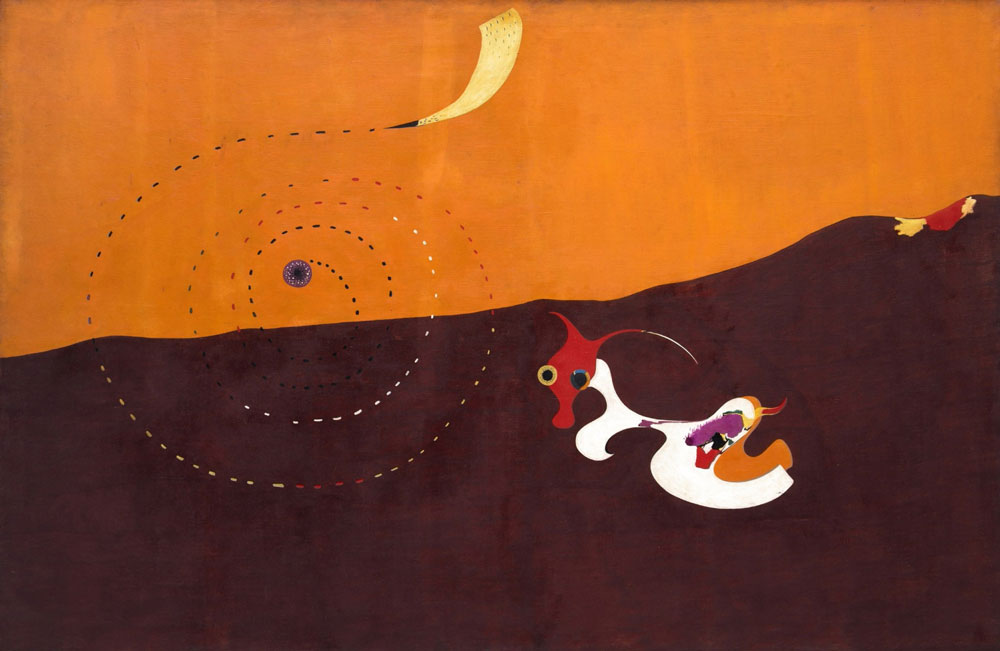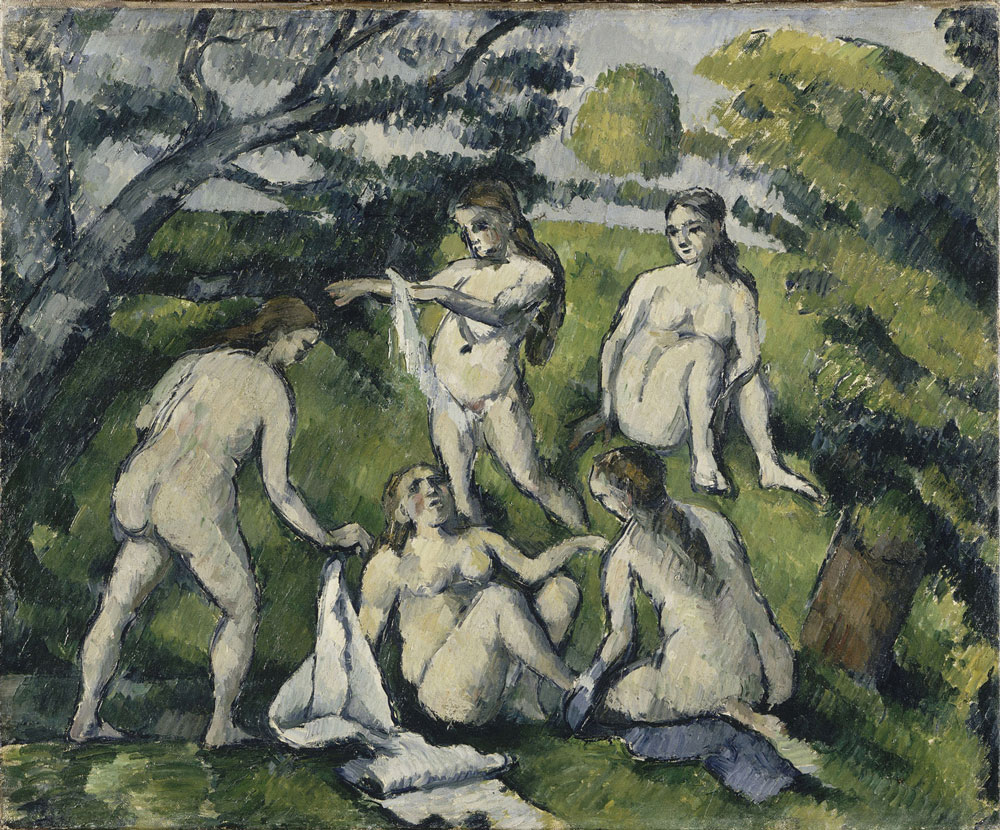Jean-Michel Basquiat | Fondation Louis Vuitton
This enormous exhibition stretches across four floors and umpteen galleries at Fondation Louis Vuitton. I toured them at the end of a long day, feet aching. Oh god, there’s more, I muttered, turning into yet another lavishly appointed room crammed with huge, violently-coloured paintings. Then again, maybe this feeling wasn’t entirely down to my aching feet: I felt similarly overwhelmed in Basquiat’s last retrospective, on at the Barbican earlier this year.
There’s so much of him to see! Thousands of paintings, packed into a short career. The compositions are deliberately ultra-saturated, packed with shapes, people, words. Such a lot of words! The overall word count on the paintings in this exhibition must be in the five figures. Has anyone been so loquacious in paintings since Cy Twombly - another artist I, if I’m honest with myself, don’t really get?

My eyes strained at the polychrome burst of ‘Johnnypumps’ - 80s slang for fire hydrants - early on in the show. Basquiat’s self portrait, accompanied by dog, partially obliterated by crazy bursts and slashes of red, shooting out like jets of water. Not to mention that the canvas, like so many others here, are enormous, the figures way bigger than life size.
His motifs repeat: the crown of thorns, vinyl records, the three pointed crown. Antic and relentless, Basquiat moved into using oil stick directly onto the canvas. Maybe that’s a mark of skill, or maybe it just saved time? Critics like Robert Hughes (more from him later) said that Basquiat was worked like a dog by his art dealers, encouraging him to over-produce once they realised how much they could sell. Though that was the spirit of the times, too: when he met Andy Warhol, his counterpart in Stakhavonite production, Basquiat dashed off his first double portrait of the pair in a couple of hours. And they produced 150 canvases together over a couple of years.
The paintings on show here are heavily skewed towards 1981-84, with very few from the final four years of Basquiat’s young life. (He was gone at 27 in a drug overdose, a year after Warhol.) The show notes make a valiant effort to claim a 1988 painting, Exu, named after an African deity, as some kind of masterpiece. But my patience had snapped by then, so I say it’s a sloppy mess by a worn-out artist running on fumes, the words merging around the murky central figure in a barely differentiated, marshy, cloud.
But the final gallery - a spectacularly uneconomical, conical, uselessly showoff room even by the standards of Frank Gehry, the Fondation’s architect - brought me up short. It features a work from the final year called Riding with Death, showing a stick figure riding on a skeleton steed - who seems to be dismembering as he runs. This is Basquiat stripped back, losing the colours and the words.

I don’t know what it exposes, though. Robert Hughes, in one of his bursts of conservatism, wrote the splenetic ‘Requiem for a featherweight’ following Basquiat’s death, which I made the mistake of reading before I saw the show.
Basquiat’s career appealed to a cluster of toxic vulgarities. First, to the racist idea of the black as naif or as rhythmic innocent…. Second, to a fetish about the infallible freshness of youth… Third, to an obsession with novelty - the husk of what used to be called the avant-garde, now only serving the need for new ephemeral models each year to stoke the market… All this gunk rolled into a sticky ball around Basquiat’s tiny talent and produced a reputation.
Aside from Hughes’ gratuitous nastiness, I can’t disagree. And my own sense of these toxic vulgarities was sharpened by the reverential atmosphere in the (packed) gallery around me. On the other hand, I’m easily influenced by critical opinion, and I was dead tired. And so much of Basquiat’s blazing colour, the mordant wit in the words, and the distinctiveness of the motifs, gave me pause.
I can’t make up my mind about Basquiat, like I said. But we’re due another massive retrospective in about six months, so maybe I can make a decision then.
Other Highlights
Also at the Fondation Louis Vuitton, I saw a just-as-flashy Egon Schiele show, the first big one in Paris in 25 years. As well as his stunningly characterful grid-patterned landscapes and spectral, scrawny drawn figures, there were some less characteristic works. The first a genuine curio, a devotional painting, commissioned by his commander in the War; the second a beautiful still life of Peasant jugs that looked back to Cézanne and forward to Morandi!
Miró: La couleur de mes rêves at the Grand Palais was just as impressive, though the artist getting the retrospective, with his crowd-pleasing warmth and joy, could hardly have been more distant.
“When I’m awake I always dream,” Miró famously said - which you can definitely see in his adorable Hare, on loan from the Guggenheim collection.

Giacometti surely met Miró in their 30s and 40s heyday, and there’s an impressive reproduction of the Swiss artist’s studio at the - all new - Insitut Giacometti. Plus an underwhelming joint exhibition with Annette Messager, and her usual cute whimsy.
Dorothea Lange’s work was the opposite of cute, and there are some stunningly lyrical photos of hers shown at the Jeu de Plume. Also showing there was a collection of Ana Mendieta’s video work, her natural experiments in “earth sculpture” perfectly matched her Super-8 format. (Though the last video she ever shot was in U-Matic, which totally undermined its impact.)
The one exhibition non-art-obsessed Parisians suggested I see was Tutto Ponti at the Musée des arts decoratifs, showing the designer’s ceramics, furniture and architecture. His seems a blessed career, getting into buildings to match the post war building boom, bending to the Neo-Classical and Art Deco trends in his furniture and fixtures, not to mention marrying rich and falling into a high-profile creative role fresh out of university. (Less explored by the reverential show notes was Ponti’s obvious success during the Mussolini years.)

Finally, I didn’t set enough time aside to see the two big shows at the Centre Pompidou, on Tadao Ando and Cubism. While Ando’s concrete boxes and cylinders seem beautiful but a bit withholding to me, I really regretted not spending time with the spectacular Cubist works.
One point made by the show, again and again, is how unloved the Cubists were during their brief heyday: mocked by the media, disowned by other - apparently also Cubist! - artists from Chagall to Leger, and finally snuffed out by War and Picasso, their ringleader, making the decision to start painting Harlequins instead.
But it was good to spend time with them anyway: works there ranged from Cézanne’s stunning Cinq Baigneuses, from Basel, to Braque’s colour-restricted landscapes, to sexy Juan Gris, to some very refined Gleizes portraits.
Jean-Michel Basquiat is at Foundation Louis Vuitton (Paris). October 3 2018-14 January 2019